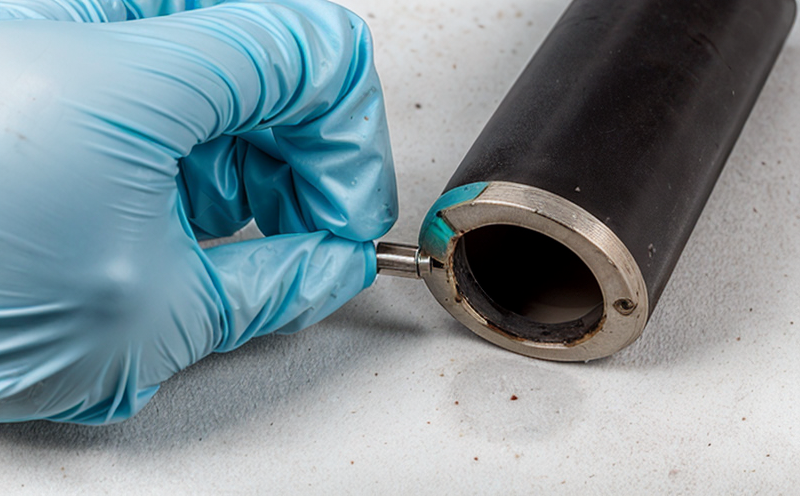Testing for degradation of the device casing due to exposure to chemicals or solvents
The Importance of Testing for Degradation of Device Casing due to Chemical Exposure Why Your Business Needs It
As the world becomes increasingly dependent on electronic devices, its more crucial than ever for businesses to ensure their products can withstand various environmental factors, including exposure to chemicals and solvents. One critical aspect of device durability is testing for degradation of the casing caused by chemical exposure. This laboratory service, provided by Eurolab, helps manufacturers identify potential issues before they become major problems, saving time, money, and brand reputation.
What is Testing for Degradation of Device Casing due to Chemical Exposure?
Testing for degradation of device casing due to chemical exposure involves subjecting a products exterior material to various chemicals or solvents to simulate real-world usage scenarios. This process helps determine how the device will react in environments with high levels of pollution, contamination, or other substances that could compromise its integrity.
The objective is to evaluate the materials resistance to chemical corrosion, degradation, and discoloration. This includes assessing the impact on the materials mechanical properties, such as flexibility, brittleness, and stiffness. By conducting this testing, manufacturers can identify potential weaknesses in their products design or materials, allowing them to make informed decisions about product development and improvements.
Why is Testing for Degradation of Device Casing due to Chemical Exposure Essential?
Using Eurolabs laboratory service provides numerous benefits to businesses
Risk Reduction Identifying potential chemical exposure issues early on minimizes the risk of costly recalls, lawsuits, or damage to your brand reputation.
Cost Savings By detecting material weaknesses before mass production, you can avoid financial losses associated with re-designing or re-manufacturing products.
Compliance with Regulations Compliance with environmental regulations and standards becomes easier when you have a thorough understanding of your products chemical exposure performance.
Improved Product Quality By incorporating the results of our testing into your product development process, you can create more durable and reliable devices that meet or exceed customer expectations.
Enhanced Brand Credibility Demonstrating a commitment to quality and safety through rigorous testing builds trust with customers and stakeholders.
Key Benefits of Using Eurolabs Laboratory Service
Comprehensive Testing Our experienced technicians conduct thorough testing using standardized methods, such as ISO 12128, EN 60068-2-30, and IEC
Accurate Results We provide precise and reliable data on material degradation, allowing you to make informed decisions about product design and development.
Expert Interpretation Our team interprets the results of our testing, providing actionable recommendations for material selection, formulation adjustments, or design improvements.
Flexibility and Scalability Eurolab can accommodate a wide range of sample sizes and types, making us an ideal partner for businesses of all sizes.
QA Testing for Degradation of Device Casing due to Chemical Exposure
Q1 What types of chemicals are typically used in testing?
A Our laboratory uses a variety of chemicals commonly found in real-world environments, such as acids (e.g., hydrochloric acid), bases (e.g., sodium hydroxide), and solvents (e.g., acetone).
Q2 How long does the testing process take?
A The duration of our testing varies depending on the specific requirements of your product. However, standard tests can be completed within 1-5 days.
Q3 Are there any limitations or restrictions on the materials I can submit for testing?
A While we can accommodate a wide range of material types, some may require special handling or equipment due to their unique properties or hazards (e.g., explosive, flammable, or reactive materials).
Q4 How do you ensure that my samples are handled and stored safely during the testing process?
A Our team follows strict protocols for sample handling, storage, and disposal to prevent any potential risks to personnel or the environment.
Conclusion
In todays competitive market, ensuring your products can withstand various environmental stressors is crucial. By partnering with Eurolab for testing of degradation of device casing due to chemical exposure, you can guarantee that your products meet or exceed industry standards for durability and reliability. Our expert team will guide you through the testing process, providing actionable insights and recommendations to enhance product quality and minimize risks.
Dont risk compromising your brand reputation or customer satisfaction choose Eurolab for comprehensive, reliable laboratory services tailored to your business needs.
-
Testing the physical durability of meters and measurement devices under mechanical stress
-
Verifying the robustness of devices when subjected to bumps, drops, and impacts
-
Assessing the device's ability to function correctly after being exposed to rough handling
-
Testing for physical damage, such as cracks or breakage, in the outer casing and display
-
Evaluating the resilience of moving parts and mechanical components in meters
-
Ensuring that the device maintains functionality under high-stress conditions
-
Assessing the long-term wear and tear of the device from repeated use
-
Testing devices designed for harsh industrial environments for shock resistance and durability
-
Verifying that the meter's housing can protect the internal components from damage
-
Testing for water ingress, dust, and foreign objects in the device casing
-
Verifying that buttons, knobs, or switches remain functional after extended mechanical stress
-
Evaluating the reliability of the device's connectors, cables, and ports over time
-
Assessing the durability of the display screen under mechanical forces like pressure or scratching
-
Ensuring that the device can withstand mechanical vibrations and rough transportation
-
Evaluating the device's performance in real-world conditions, including physical shocks
-
Ensuring the mechanical design of the meter can withstand user errors or accidental misuse
-
Testing for reliability when the device is subjected to thermal cycling and rapid temperature changes
-
Verifying the robustness of connectors and cables used in industrial applications
-
Assessing how well the meter withstands high-impact environments like construction sites
-
Ensuring the device can function without major damage when dropped or exposed to heavy impact
-
Evaluating the impact on the meter’s accuracy when subjected to significant physical stress




